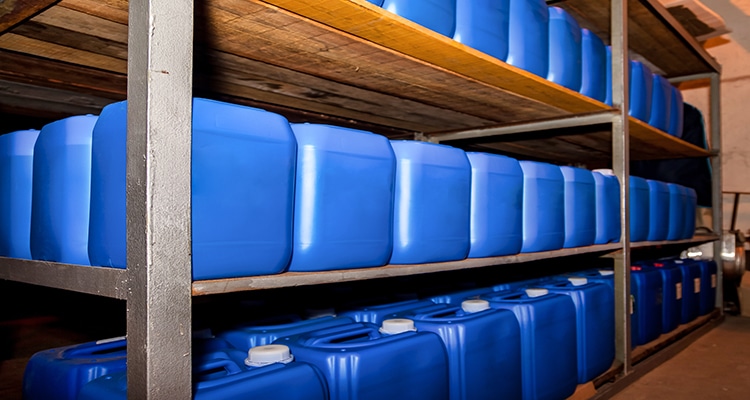As businesses strive to operate sustainably, understanding and adhering to U.S. environmental laws is crucial. These regulations help protect ecosystems, ensure worker and public safety, and promote responsible resource management. Compliance is not only a legal requirement but also a way to enhance corporate reputation and avoid financial penalties.
To help businesses navigate the regulatory landscape, we’ve compiled an overview of the most significant environmental laws in the U.S. and their impact on various industries.
Major U.S. Environmental Laws and Their Business Implications
The Clean Air Act, established in 1970 and amended in 1990, is a cornerstone of U.S. environmental policy. It regulates air emissions from stationary and mobile sources to minimize pollutants that pose health and environmental risks.
🔹 Who it affects: Manufacturers, power plants, oil refineries, transportation companies, and any business with significant emissions.
🔹 Key requirements: Businesses must obtain permits for emissions, meet air quality standards, and implement pollution control technologies.
🔹 Why it matters: Violations can result in hefty fines and operational restrictions.
The Clean Water Act governs the discharge of pollutants into U.S. waters and aims to maintain water quality standards for drinking, recreation, and wildlife protection.
🔹 Who it affects: Industries that discharge waste into water bodies, including factories, farms, and construction companies.
🔹 Key requirements: Businesses must obtain permits for wastewater discharge and comply with regulations on stormwater runoff and hazardous spills.
🔹 Why it matters: Ensuring clean water reduces environmental damage and public health risks while avoiding non-compliance penalties.
The RCRA oversees the management and disposal of hazardous and non-hazardous waste, setting guidelines for businesses to handle waste responsibly.
🔹 Who it affects: Manufacturing, healthcare, chemical, and waste management industries.
🔹 Key requirements: Companies must track hazardous waste from creation to disposal and use appropriate containment and disposal methods.
🔹 Why it matters: Proper waste management minimizes environmental contamination and liability risks.
- The Comprehensive Environmental Response, Compensation, and Liability Act (CERCLA)
Also known as Superfund, CERCLA holds businesses responsible for cleaning up hazardous waste sites and preventing environmental contamination.
🔹 Who it affects: Industries that handle hazardous materials or have previously contaminated sites.
🔹 Key requirements: Companies must remediate pollution, report hazardous releases, and contribute to cleanup costs when responsible.
🔹 Why it matters: Non-compliance can lead to legal action and financial liabilities for environmental damage.
The TSCA regulates the production, importation, and use of chemical substances that pose potential health or environmental risks.
🔹 Who it affects: Chemical manufacturers, importers, and businesses using industrial chemicals.
🔹 Key requirements: Companies must report, test, and control chemicals that may be hazardous.
🔹 Why it matters: Ensuring chemical safety protects workers, consumers, and ecosystems while preventing regulatory fines.
NEPA mandates environmental assessments for projects involving federal funding or permits, ensuring that businesses consider their environmental impact.
🔹 Who it affects: Construction, infrastructure, and energy industries, especially those working on government-funded projects.
🔹 Key requirements: Companies must complete Environmental Impact Statements (EIS) or Environmental Assessments (EA) before starting major projects.
🔹 Why it matters: Compliance streamlines project approvals and prevents environmental disputes.
How Businesses Can Stay Compliant
Staying compliant with environmental laws requires proactive strategies. Here’s how businesses can manage their environmental responsibilities effectively:
✔️ Conduct Regular Audits: Identify potential compliance gaps and address them before regulatory inspections.
✔️ Implement Sustainable Practices: Reduce emissions, manage waste efficiently, and adopt eco-friendly technologies.
✔️ Stay Informed on Regulations: Environmental laws evolve, so keeping up with changes ensures ongoing compliance.
✔️ Invest in Compliance Software: Digital tools can help track permits, monitor emissions, and manage waste disposal efficiently.
By integrating these strategies, businesses can not only meet legal requirements but also enhance their sustainability efforts and corporate reputation.
Final Thoughts
Environmental laws in the U.S. are designed to protect natural resources, public health, and the climate. Understanding these regulations and implementing compliance measures ensures businesses operate responsibly while avoiding legal and financial repercussions.
If you’re looking for tools to simplify environmental compliance, investing in smart management solutions can help streamline processes and keep your operations aligned with regulations.
Would you like guidance on specific compliance requirements? Our team is here to help. Reach out to learn more about how we can support your sustainability and regulatory goals.



